M Victoria in London was the venue for a wide ranging debate on Rueda, Verdejo, Spanish white wines and the opportunities they all have in raising their profile and driving sales in the UK.
Rueda is blessed with one key grape variety. Verdejo. It makes up 86.5% of its production (2021). But scratch below the surface and there is a whole lot more going on, both in terms of the styles and diversity of the Verdejo grape itself, but what is happening in the vineyards, the cellars, and the impact of its new Gran Vino de Rueda classification that is shining the light on all the old vines the region has.
That was the key purpose of the Rueda debate hosted by The Buyer, in partnership with Denomination of Origin Rueda. To throw open the region and its wines to key UK wine buyers to better understand just what Rueda means to them and whether the changes taking place in the region are having an impact on the wines they are seeing and looking to buy.
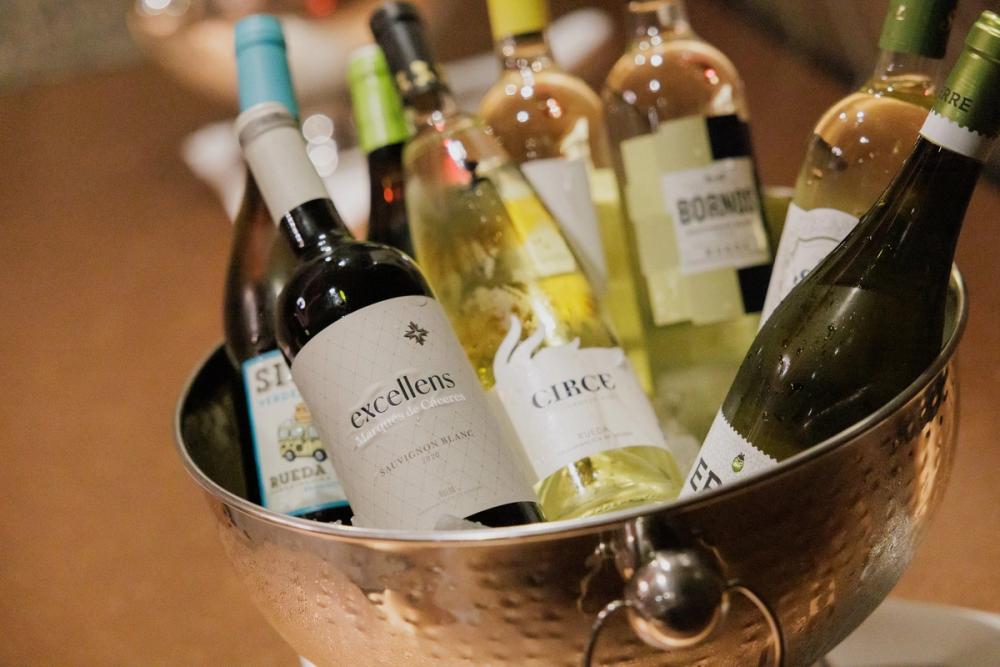
The Rueda debate was the chance for leading buyers to assess a wide range of its white wine styles (Photography: Thomas Skovsende)
What do buyers think of the changes in the D.O. to allow Viognier and Chardonnay to be grown in Rueda? Should it be encouraging producers to work more with Sauvignon Blanc? What impact will its new Gran Vino de Rueda classification for wines made only from 30 years or older vines have on the trade? Or the introduction of “Vino de Pueblo” to highlight the municipalities where a particular wine is from? The decision to bring all its single white wines under a central “Rueda” label? The potential for ‘Rueda Pálido’ a new classification for a traditionally crafted wine that has been brought back to life? The facts its single varietal wines are made up a minimum 50% of the main grape variety?
For it is one thing making these dramatic changes to how wines can be made in Rueda, it is quite another for those changes to pass through the trade to the buyers on the front line making the decisions about which wines consumers are ultimately going to see.
To help analyse those changes and delve into just what potential Rueda has in the UK market we brought together the following buyers:
- Angus Macnab, experienced sommelier, wine consultant, currently working at DVine Cellars inClapham, south London.
- Harry Crowther, UK wine buyer for Good Pair Days, one of the fastest growing online wine sites in the UK that first started in Australia, and selects and pairs wines based on your tastes.
- Max Driscoll, Spanish buyer at Raymond Reynolds, a specialist wine importer in Spanish, Portuguese and German wines.
- Paul Belcher, owner of The Tapas Room, a five-strong group of Spanish restaurants across south London, and winner of Decanter’s Spain Specialist Retailer of the Year.
- Raul Diaz, wine consultant and educator who runs Wine Training School and advises restaurants on lists and food pairing.
Simple, clear message

What do you think of this then? Max Driscoll from Raymond Reynolds discusses one of the wines with Paul Belcher, left, and Raul Diaz, right. (Photography Thomas Skovsende).
It’s the fact that Rueda has clear, simple message about what it stands for and what its wines are about that makes it stand out from other regions, stresses Raul Diaz. “It’s different from other regions because buyers, and customers don’t have a problem understanding the style they are going to get. That’s why it is such a good region to promote and has such great potential. It’s a good story.”
Its message, for example, is far easier to understand and communicate to people who don’t know a great deal about wine that it is say for Rías Baixas, he adds. “It’s always good value from Rueda.”|
“Rueda for me has huge potential as a region,” says Angus Macnab at DVine Cellars . “The wines are commercial in style. Similar to Sauvignon Blanc, but are also more complex, give more weight on the palate, and are so much better for food and wine pairing. Its wines should be in the same space as Picpoul de Pinet.”
Max Driscoll at Raymond Reynolds says the fact the region has attracted so many big name Spanish producers and co-ops has certainly helped its profile and reputation as a source of good value wine, but there are also lots of smaller, quality operators to work with as well. It has, for example, linked up with Bodegas Pita that, he says, offers that winning combination of making a great value wine, but with great care, attention and is looking to make “something special” using barrel age.
“We have been working with them for about five years and they have only been going since about 2011, but they are a winemaker and a winery going in the right direction with a great focus on producing high quality, organic wines with lots of expression.”
Power of Verdejo
When it comes to the wine itself there is only one place to start in Rueda. And that’s with Verdejo. The unique wine style that has put Rueda on any wine buyer’s map. In fact, it’s clear from our initial discussions that the buyers are united in what Verdejo means to them: a great value, consistent white wine grape variety that delivers time and again.
“It’s the vibrancy in Verdejo I like so much,” says Diaz. “It’s the energy,” adds Macnab.
Harry Crowther at Good Pair Days says textbook Verdejo just has so much going for it in terms of the impact in the mouth, the freshness and acidity.
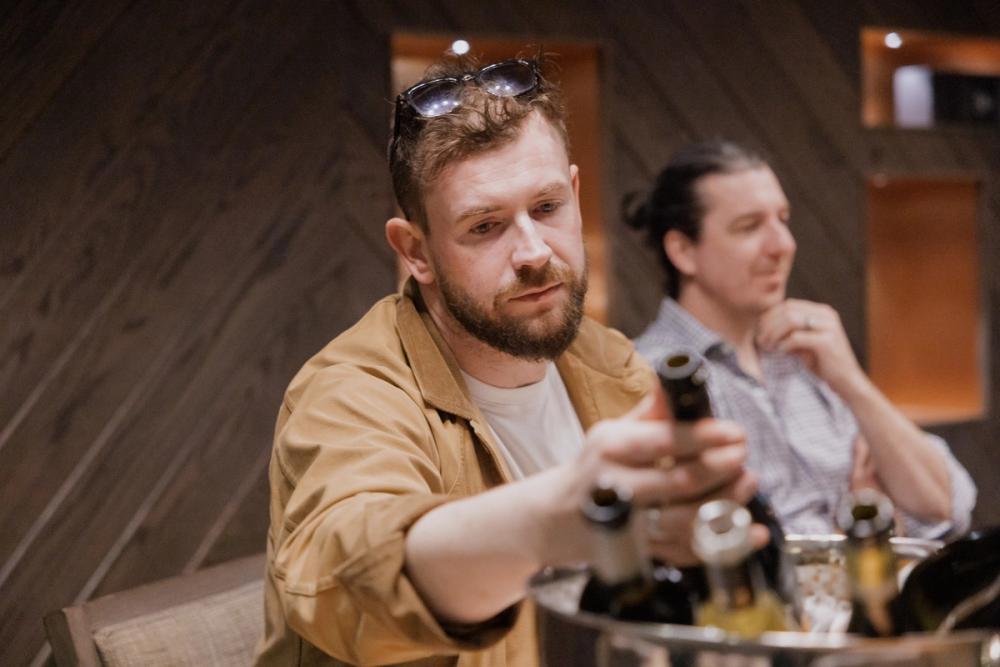
Harry Crowther from Good Pair Days says he was particularly taken by the fresh, vibrant styles of Verdejo. (Photography Thomas Skovsende).
The tasting proved a particularly interesting exercise for the buyers as they had a chance to taste such a wide range of styles of Verdejos, including those that had been barrel aged and received different wood treatments versus stainless steel and the differences and complexity and mouth feel that the wines have.
The diversity and range of Verdejos took the buyers by surprise with two main distinct styles emerging between the full on, bright, vibrant wines, and the deeper, more complex, richer styles, common with more old vine wines.
The wines that could combine the two, the freshness and fruit up top, backed up layers of texture and lees ageing, were the real stars of the tasting.
Paul Belcher at The Tapas Room says: “The ones I really loved were the cross between the vibrant and textured wines. The ones that had mixture. That cross over. Lovely, smooth, fresh, exciting wines.”
Diaz says the tasting showed how much more diverse Verdejo is. “The vibrant, quaffable wines can challenge lots of wines in the market. Then you can move to the more barrel aged styles that have a bit more oak and then you can move on from there. The core Is the same, but the expression is different. There are essentially two styles. One we can drink now, and one we can develop that is still very good value.”
Belcher adds: “The best Spanish white wines are the ones that can go with all types of food and that is what Rueda can do so well.”
The panel was united in just how powerful it is for a region to have one big grape variety they can understand and get behind. Like with Tempranillo in Rioja and Sauvignon Blanc in Marlborough.
Macnab urges the region to put all its weight behind pushing, promoting and developing Verdejo. “It has a unique grape variety that no-one else really has in the world. That is so powerful. That is what it should be building on, concentrating on and working to make Verdejo even bigger than it currently is.”
Diaz agrees: “A lot of countries want to have one grape variety they can champion and are looking for the right grape variety to get behind. If you have a unique thing then you should put all your money behind it. The region is very lucky to have this one grape variety.”
Balancing act

Angus Macnab could see the commercial reasons for planting more Sauvignon Blanc. (Photography: Thomas Skovsende).
So strong is Verdejo’s position in Rueda that the buyers were unsure about tempering that message by trying to put more emphasis on other grape varieties, particularly Sauvignon Blanc, and now the decision to allow Viognier and Chardonnay to be grown there.
Whilst they could recognise the quality in the Sauvignon Blanc wines being made in Rueda – both the Sauvignon Blancs in the tasting received wide praise – they were not sure how valuable it was for the region as a whole to dilute Verdejo’s position.
Crowther and Macnab could both see the strong commercial reasons why it makes sense for the D.O. to allow its producers to introduce more Sauvignon Blanc and answer the call from international buyers looking for new supplies of this ever in demand grape variety.
But Crowther was unsure about the long term impact on the region. “Are you not muddying the waters introducing Sauvignon Blanc?” he asks. “I can see why they are doing it to push more sales internationally, but what does that do for the region’s identity? I am not sure what direction they are going in by planting more Sauvignon Blanc.”
Driscoll agrees: “Why make Sauvignon Blanc in Rueda? It is just so much harder to do. We are a Portuguese specialist and would not think of sourcing Sauvignon Blanc from there. I am not sure it is the right thing to use international varieties to push Rueda.”
Macnab, though, was more bullish about the prospects of Sauvignon Blanc in the region and can imagine a lot of buyers being quite happy sourcing their Sauvignon from there. “Verdejo and Sauvignon Blanc. There is a synergy there. But I struggle to see Viognier and Chardonnay being successful in Rueda.”
He adds: “Sauvignon Blanc from Rueda can succeed in the export market. They are not amillion miles away from New Zealand and are a good expression of the grape variety,and have a good typicity. I don’t have a problem with it if it helps the region get itself on the map.”
Diaz can see the case for using the international varieties in the domestic Spanish market, but for “export keep it simple, put your money on Verdejo, there is no competition there”.
Belcher says there is a clear cross over between the two varieties – Verdejo and Sauvignon Blanc – in terms of the fresh, vibrant styles they offer. “We often introduce Verdejo to some of our customers as if you like Sauvignon Blanc then you will like this,” he says. Belcher also pointedly does not put Sauvignon Blanc on his list as he wants to offer authentic Spanish varieties.
Driscoll says introducing Verdejo as an “alternative to Sauvignon Blanc” makes perfect sense. “It’s a way in to the variety. The only danger is making it play second fiddle to Sauvignon.”
Pushing premium and diversity
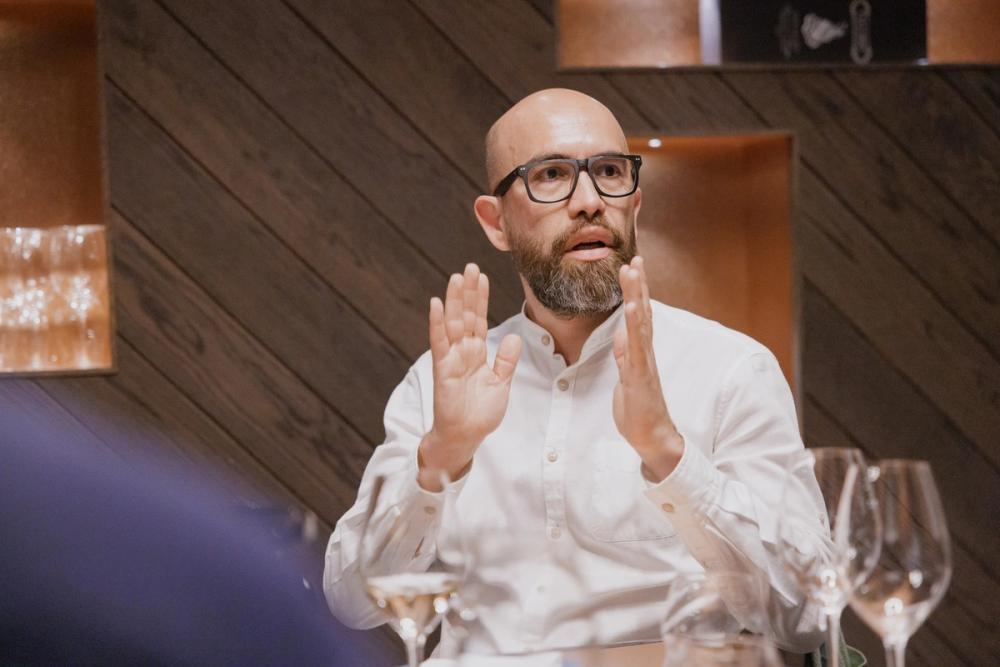
Raul Diaz believes the region is best to focus on what it does best: Verdejo. (Photography Thomas Skovsende)
Macnab also thinks there is lots of potential for Rueda to highlight the steps it is making to diversify and offer more complex, premium and interesting wines, be it through barrel ageing, work in the vineyards and cellar to make a wider variety of Verdejo styes. He says there has to be also great potential for its sparkling wines – buoyed by the recent D.O change to include the words “Gran Añada” (excellent harvest) when the wine’s production process exceeds 36 months.
To really take the next steps up the premium ladder needs a bigger focus and understanding of what is being done in the vineyards in terms of viticultural changes, sustainability practices, and moves towards organic winemaking, adds Macnab.
“Perhaps introduce tasting panels to help classify the wines and help promote and segment the region more,” he says.
The new Gran Vino de Rueda classification, that can only be made from 30 year old vines, with a yield of less than 6,500 kg per hectare, was seen as another good step forward, with one caveat – having older vines does not always mean making a better wine.
The new Gran Vino classification needs to come with it a better understanding of where the best plots are that those older vines are located.
Crowther says: “Old vines is a good commercial sales tool and usually means the wines have more complexity. But it would also be good to see it being combined with site selection and farming practices too.”
Macnab would also like to see a superior category introduced that was based more on the framing and viticultural practices being used and the production process. “The legislation is still young so will take time to build,” he says.
Diaz says there is much Rueda can learn from Rioja and the new classifications it has brought in to really drill down to the sites and locations where the wines are being made from. Which is where the new Vino de Pueblo classification, that shows the municipality where the wine comes from, potentially comes in.
Future challenges
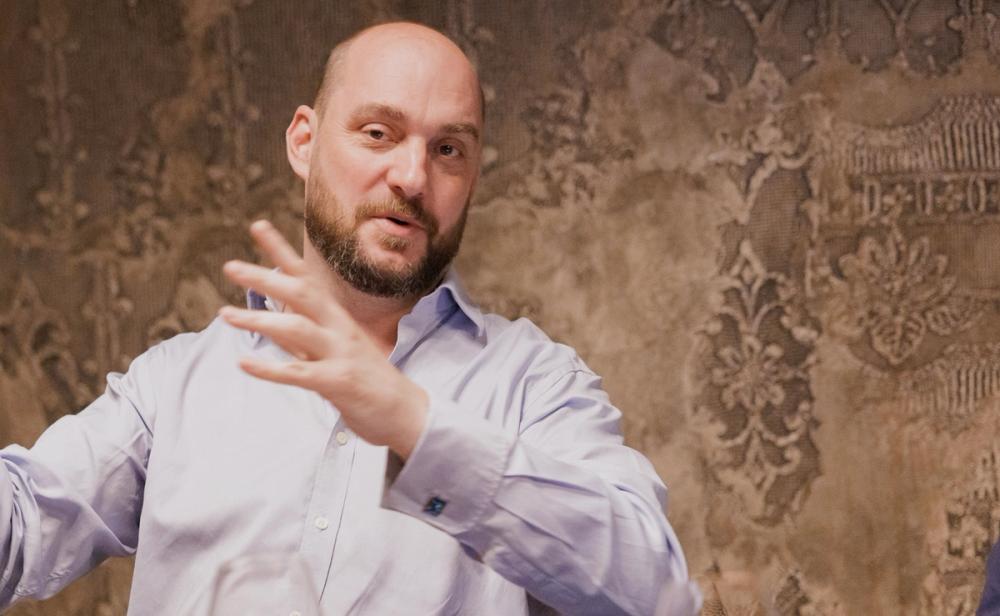
Paul Belcher says he might describe Verdejo as “like Sauvignon Blanc” to his restaurant customers so they understand the taste profile. (Photography Thomas Skovsende)
Macnab says the biggest challenge Rueda has is how much does the region “translate to the consumer”. The opportunity is certainly there for it to return to the “momentum it had in the mid 2000s” when it went on to miss out on the pressure to cut down wine lists. “That’s when it lost its focus and popularity” in the overseas market, but was able to build a “phenomenal” market in Spain where it is a brand in its own right.
“As a region it has exploded and it is now eight to 10 times the size it was 20 years ago,” he adds.
But that growth also throws up questions. Are the vines planted in the right areas? Do we know which zones and municipalities are right for which varieties and styles of winemaking?
“May be with the new D.O rules it will be better for professionals to understand the area more,” adds MacNab.
The buyers would certainly welcome understanding more the differences between different areas of Rueda and what impact there is in terms of climate, soils, topography. That’s not well understood or appreciated at the moment.
Driscoll says having visited the region he has a clearer impression of the lay of the land and “an appreciation of the different terroir between more or less clay” and a shift between north and south, which brings more acidity being close to the Douro river. But he admits he is not as well versed with the terroir differences as he would be in other mainstream European wine regions.

The barrel aged wines offering more texture were a nice foil to the bright vibrant styles of Verdejo. (Photography Thomas Skovsende)
In summary
There was much for the buyers to take away from the session. What was clear was just how much more potential Rueda has from what is already a strong foundation.
Crowther summarised its position well: “The ball is already rolling and it’s now just a case of really getting behind it.”
For him that means putting all Rueda’s energy behind Verdejo and doing what it can to celebrate and promote all the diversity there is with the grape variety. “Rueda is synonymous with one grape variety. Verdejo. That’s where it can smash it, rather than focus on other areas, ramp up Verdejo.”
Diaz believes it is the brighter, more vibrant styles of Verdejo that are best placed to do well in the UK and overseas market, particularly in attracting in younger drinkers. “It is the brighter, fresher style. It’s also not expensive. If you have a bit more money and room on your list then you can look to have a more old vine style as well.”
Crowther agrees there is a “clearly a base style, launch pad for the region” which is not too dissimilar to Sauvignon Blanc with its “cool ferment, pear drop, bayleaf, vibrancy style”.
Belcher says the beauty of Verdejo is that “starts with a particular style” but then has the capability to expand and introduce different expressions. That is what really came through in the tasting, he says.
Macnab agrees and says what is particularly attractive about Verdejo is how it allows those extra layers to be bolted on, be it lees or barrel ageing. “There are not many great white wine regions in Spain. So it has a great opportunity.”
But only if it focuses on the right areas. “Its next steps are quality, viticulture and vilification. Can it start to develop pet nats, orange wines, more sparkling wines?” he asks.
Driscoll says the region also has great cut through with consumers. “It’s one grape variety and it’s easy to pronounce. They have the brand built and ready to go.”
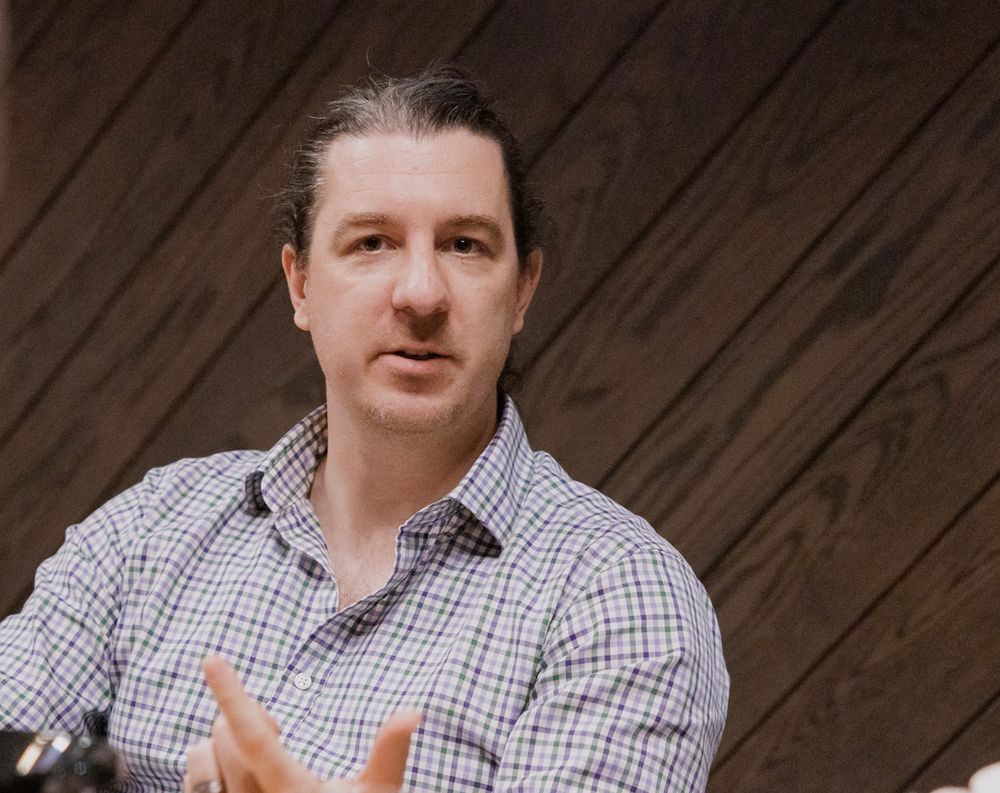
Max Driscoll from Raymond Reynolds said he welcomed the chance to taste so many Rueda wines in one go. (Photography Thomas Skovsende)
But then also stresses it is not fair to “pigeon hole” Rueda as being just one option. “It’s far more complicated than that. There are various steps up the Verdejo ladder and it has great potential to age. We have 2016 wines that are still singing.”
The tasting threw up a number of different bottles shapes and designs which confused rather than enthused the buyers as it was not clear which style of bottle reflected a better quality. They urged the region to come up a distinctive bottle shape that would also help buyers and consumers know they were buying a wine from Rueda.
“That would be genius,” says Macnab. “100% they should do it.”
Driscoll says: “I found it to be a very useful exercise overall, in tasting so many Rueda wines in one go, and a good learning experience for myself to better understand other perspectives within the trade.”
Diaz has one final message for the region: “It is so lucky to have what it has. It needs to focusand build on that.”
The final word goes to Harry Crowther who summed up the session perfectly: “The best Ruedas I have had in my life have been today. It has been such a great opportunity to explore what the region and Verdejo can do. I have not been able to do that before and the chance, in particular, to see the more textured styles. Before I have only really seen the commercial styles. There is so much potential and excitement here.”
Rueda Facts and Figures
- Rueda became a designated region in 1980 – the first in the Castilla y Leon region.
- It has 20,232 hectares of vines, spread across 74 wineries, 1, 580 growers and 3,000 families.
- Rueda consists of 74 municipalities over three provinces.
- 87.8% of its production is white wines.
- Verdejo production is 93% of all grapes grown accounting for 17,764 hectares of the 20,232 hectares.
- 2021 harvest saw 124,533,302 kgs produced of which 99.4% was white grapes and 86.5% Verdejo.

Rueda is dominated by Verdejo but is starting to see how other varieties can work in the region including Sauvignon Blanc, Chardonnay and Viognier
- Rueda in 2021 sold 83,100,205 bottles, of which 99.87% were white wine, the equivalent of 81,921,339 bottles.
- Rueda is the second larges D.O. in Spain accounting for 11.4% MAT in June 2020 and 14.1% MAT in the on-trade.
- It exports 15% of its wine with its biggest markets the Netherlands, Germany, Switzerland, Russia, the rest of the EU and the UK.
- It is the biggest D.O for quality white wines with 39%.
- Within Spain Rueda is the most consumed white wine (31%); the favourite (24%); the most recommended (24%).
- It enjoys a continental climate, 700m to 873 metres above sea level, with large day and night differences, cold, hard winters and hot summers.
- Its soils are largely pebbly
- Its single varietals need to be made from at least 50% of the main grape.
- Its sparkling wines need to be made from at least 75% of the main grape.
- Gran Anada status is given to sparkling wine that has taken at least 36 months to make and release.
- Gran Vino de Rueda classification is for wines made from minimum 30 year old vines and yields of 6,500 kg per hectare.
- Vino de Pueblo for wines that are made with at least 85% of grapes from that municipality
- You can find our more about Rueda at the official website here.































